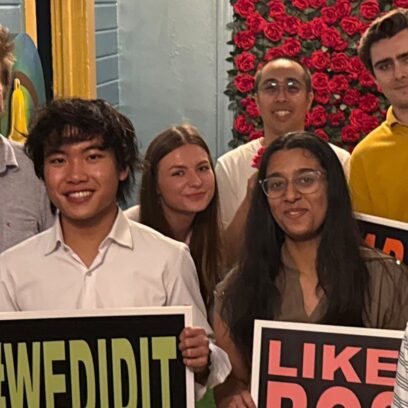Navigating the Proposed Updates to SBTi’s Corporate Net-Zero Standard

What you need to know about the proposed updates.
In March 2025, SBTi released a proposed draft of its Corporate Net-Zero Standard (Version 2.0), which would differentiate between company sizes, focus on material emissions, and require roadmaps and check-ins for added transparency. The draft is currently open for public consultation until June 2025. In this blog post, we cover the key proposed changes and explain what these changes could mean for your business. Here’s what’s being proposed—and how to stay ahead. If you’re already setting or validating SBTi targets, these updates could affect your timeline, emissions data requirements, target-setting approach, and near-term planning strategy.
Focus on Material Emissions
The draft emphasizes focusing on material sources of emissions rather than applying blanket strategies across all operations. This would allow companies to concentrate efforts on the most significant contributors to their carbon footprint, increasing the potential for real impact while making target-setting more practical.
Distinct Targets Required for Scope 1 and Scope 2 Emissions
Under Version 2.0, companies would need to set separate, clearly defined targets for Scope 1 (direct) and Scope 2 (purchased energy) emissions. While these scopes have always been required as part of target-setting, the updated standard would place greater emphasis on treating them as distinct elements of an organization’s emissions profile, with explicit reduction strategies tailored to each.
This increased granularity is intended to improve transparency and comparability between companies, especially those operating in sectors with high energy dependence or unique infrastructure setups.
Scope 3 Flexibility
The draft would shift how Scope 3 emissions are addressed. Previously, SBTi required absolute reductions across all emission scopes, which created challenges for companies with complex or opaque supply chains. Version 2.0 would allow businesses to set Scope 3 targets based on green procurement commitments or revenue from low-carbon products, rather than solely requiring absolute cuts.
“SBTi’s proposed updates to its Corporate Net-Zero Standard represent a significant shift in how companies would be expected to set, validate, and track their climate targets.”
Pankaj Tanwar, Managing Director, Climate Services

🌍 Carbon markets can feel overwhelming—fragmented data, limited transparency, and conflicting advice make it hard to know where to start. In this webinar, our experts give a clear, practical introduction to the VCM.
Early Carbon Removals Encouraged
The draft introduces an important change: if the proposed changes are made, companies would be able to invest in carbon removal solutions before reaching their net-zero target year. Previously, carbon removals were expected to be deployed only after companies had reduced emissions to a minimum level and were closing the gap to net zero.
Under Version 2.0, businesses could incorporate verified carbon removal projects—such as direct air capture or nature-based removals—earlier in their transition. This update would encourage earlier investment in emerging technologies and provides a clearer mechanism to address residual emissions from hard-to-abate sources in the near to medium term.
Timelines Depend on Company Size
Recognizing the difference in resources between companies of varying sizes, the draft proposes staggered timelines for formalizing net-zero commitments after target validation.
Large companies (Category A) would be required to declare their net-zero commitment within 12 months of validation, while small and medium-sized enterprises (SMEs) would have 24 months. This change acknowledges capacity gaps while still ensuring accountability. The draft also outlines simplified pathways for SMEs, with more streamlined target-setting and reporting processes.
Structured Validation & Regular Check-ins
The proposed update would replace the informal commitment letter with a structured validation process. It also introduces baseline assessments and mandatory progress updates every five years, or sooner if material business changes occur. This update would strengthen accountability and ensures targets remain aligned with the latest climate science.
Conclusion
SBTi’s proposed updates to its Corporate Net-Zero Standard represent a significant shift in how companies would be expected to set, validate, and track their climate targets. From new flexibility in Scope 3 target-setting and formal recognition of Beyond Value Chain Mitigation (BVCM), to simplified pathways for SMEs and more rigorous validation requirements, these proposed changes aim to make net-zero goals both more attainable and more credible. But with added flexibility comes added complexity—especially for companies managing large supply chains, limited internal resources, or evolving reporting systems.
If your business needs help understanding how these changes may affect your current or future targets—or if you’re just getting started with SBTi alignment—we’re here to help. Contact us today to get started.
The most notable shift is the added flexibility in how companies—especially those with complex value chains—can set Scope 3 targets. Version 2.0 introduces new options based on green procurement and low-carbon revenue instead of requiring absolute reductions across the board. It also introduces clearer guidance on Beyond Value Chain Mitigation (BVCM), differentiated expectations for SMEs and large companies, and a more formal validation process post-commitment.
No, BVCM is not mandatory—but it is now formally recognized as a supplemental tool for addressing residual emissions. The standard emphasizes that businesses must prioritize direct emissions reductions first. Once those reductions are maximized, high-quality BVCM—like verified carbon removal or renewable energy projects—can be used to address what remains.
While the draft references SMEs in the context of simplified pathways, the SBTi typically defines an SME as a company with fewer than 500 full-time employees. However, final definitions and thresholds may be refined before the final standard is released. If you’re unsure where your company falls, it's worth reviewing the draft or reaching out for guidance.
The draft is open for public consultation through June 2025. After the consultation closes, SBTi will review the feedback, revise the draft, and release a final version. The implementation timeline has not yet been confirmed, but companies should expect a transition period and should begin evaluating alignment now to avoid delays when the new standard becomes effective.
Start by assessing your current net-zero or SBTi targets against the proposed changes—especially Scope 3 strategies, data readiness, and reporting practices. Consider whether BVCM could play a role in your strategy, and if you’re an SME, look into how the simplified approach could apply. Engaging with a partner who understands the evolving SBTi landscape can help you navigate these updates and make informed decisions ahead of the final release.



